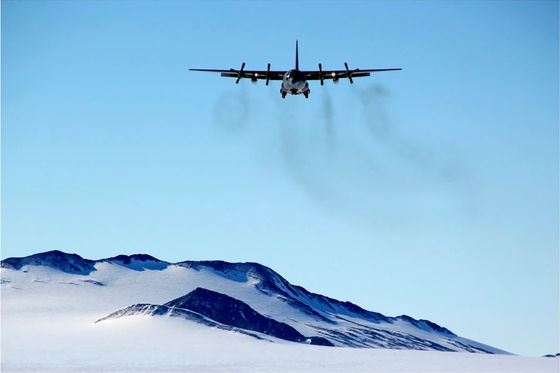When researchers and tourists visit Antarctica, the amount of snowmelt increases by 83 tons per person.

Antarctica is visited by many tourists as well as researchers, with more than 74,000 in the 2019-2020 season. According to a survey by a group of researchers such as the University of Santiago, Chile, black carbon produced from ships and airplanes used for visiting Antarctica and diesel generators used at Antarctic bases in each country has caused a large number of visitors in areas with many visitors. It turned out that the maximum amount of snowmelt was 23 mm more every summer.
Black carbon footprint of human presence in Antarctica | Nature Communications

Black carbon pollution from tourism and research increasing Antarctic snowmelt, study says | Antarctica | The Guardian
A group of researchers have found black carbon concentrations in 28 samples collected in the summer for four consecutive years at 28 locations with a cross section of approximately 2000 km from King George Island (62 ° S) at the northern end of Antarctica to the Ellsworth Mountains (79 ° S). Was measured. The Ellsworth Mountains are marked on the map below.
As a result, it was found that the black carbon concentration was higher in the popular tourist destinations on the Antarctic bases and coasts of each country than in other places. In areas with high black carbon concentration, radiative forcing accelerated snowmelt, and the decrease in snowfall each summer reached a maximum of 23 mm. In short, the phenomenon that ash and charcoal are sprinkled on the snow to absorb sunlight and melt the snow well is occurring in Antarctica, and the amount reaches nearly 1000 tons, and one visitor to Antarctica. It is said that it is equivalent to 83 tons per unit.
Black carbon is generated when diesel engines, coal burns, wildfires , and wood are burned at home. It has been.
Ice core studies have shown that the concentration of black carbon extracted from meltwater in Antarctica is always 1 ng / g, an order of magnitude lower than that of the Arctic. In the sky above Antarctica, smoke generated by wildfires in South America and Australia and dust from central Australia and southern Patagonia have been confirmed, but it is simulated that black carbon will not be carried in large quantities as an aerosol. The snow around Palmer Base, McMurdo Dry Valley Field Observatory, and Amundsen-Scott Base has a higher black carbon content than other points.
In other words, it is thought that the concentration of black carbon in Antarctica increased as human activity became more active. According to data from the Antarctic Research Expedition Council and the Antarctic Treaty Secretariat, 76 research facilities are being actively used within the Antarctic Treaty area, and the number of people who can stay is about 5,500. Sightseeing tours are also held, and according to the International Association of Antarctic Tour Operators, there are 74,000 tourists in the 2019-2020 season. This is a 32% increase from the previous season, which is double the number 10 years ago.
The following is a C-130 transport aircraft landing on the runway of the Ellsworth Mountains Union Glacier, as shown in the paper.

Andrew Mackintosh, a professor at Monash University who was not involved in the study, told The Guardian, 'The two major processes of melting snow in Antarctica are the warming of the sea that melts ice shelves from below and the rise in surface temperature that melts ice from above. And decades to centuries ahead, when even greater surface warming occurs, the increased black carbon will exacerbate the effects of snowmelt. '
Dr. Raul Cordero of the University of Santiago, who conducted the research, said that although the amount of snowmelt due to the influence of black carbon is less than that lost due to global warming, the research in the Antarctic will shift to the one using renewable energy. He pointed out that it highlights the need. A good example is the Belgian Princess Elizabeth base, which uses wind energy. 'Antarctica is the last continent that is more or less unpolluted. I think we should try to keep it that way.' Said.
Related Posts:
in Science, Posted by logc_nt







